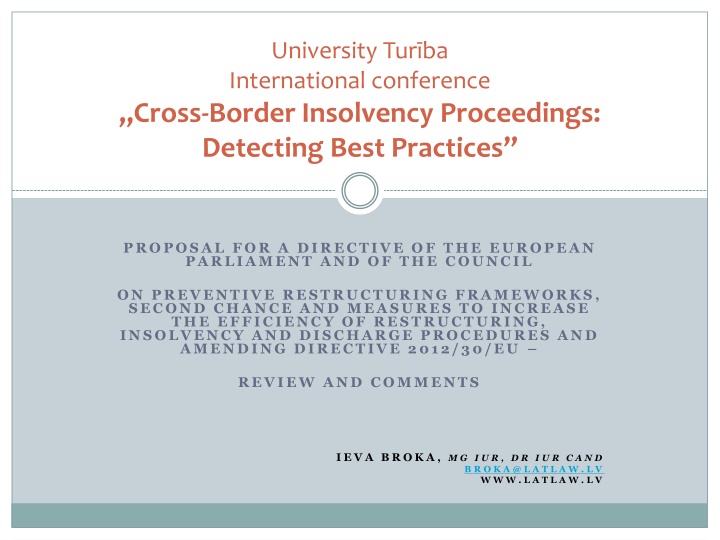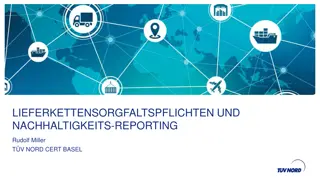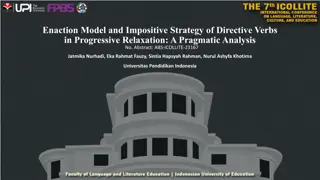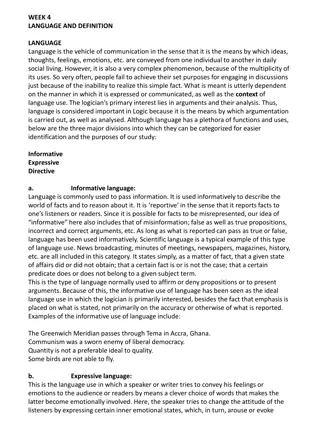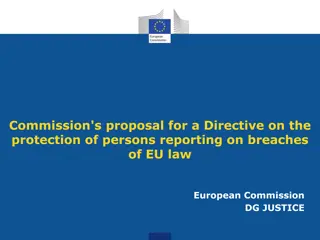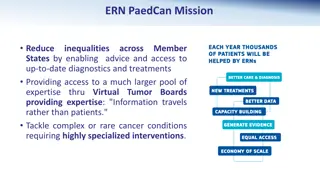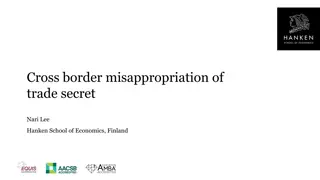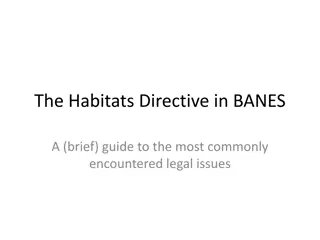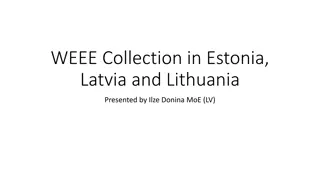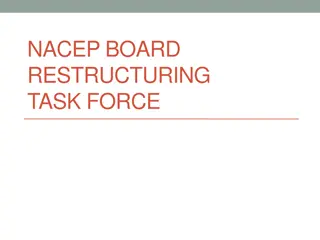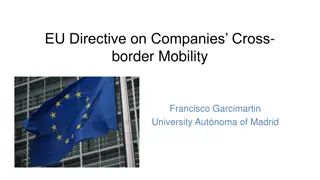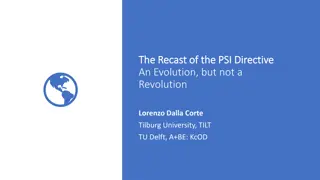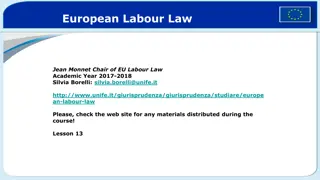Proposal for Directive on Preventive Restructuring Frameworks
This proposal aims to enhance restructuring efficiency in cross-border insolvency proceedings, offering a second chance to entrepreneurs while preserving viable business parts. The Directive includes 47 considerations and 36 articles, addressing barriers to capital flow and promoting timely restructuring to ensure long-term viability of businesses. Divergences in restructuring procedures among Member States are highlighted, emphasizing the need for a cohesive approach towards cross-border restructuring plans.
Download Presentation

Please find below an Image/Link to download the presentation.
The content on the website is provided AS IS for your information and personal use only. It may not be sold, licensed, or shared on other websites without obtaining consent from the author.If you encounter any issues during the download, it is possible that the publisher has removed the file from their server.
You are allowed to download the files provided on this website for personal or commercial use, subject to the condition that they are used lawfully. All files are the property of their respective owners.
The content on the website is provided AS IS for your information and personal use only. It may not be sold, licensed, or shared on other websites without obtaining consent from the author.
E N D
Presentation Transcript
University Turba International conference Cross-Border Insolvency Proceedings: Detecting Best Practices PROPOSAL FOR A DIRECTIVE OF THE EUROPEAN PARLIAMENT AND OF THE COUNCIL ON PREVENTIVE RESTRUCTURING FRAMEWORKS, SECOND CHANCE AND MEASURES TO INCREASE THE EFFICIENCY OF RESTRUCTURING, INSOLVENCY AND DISCHARGE PROCEDURES AND AMENDING DIRECTIVE 2012/30/EU REVIEW AND COMMENTS I E V A B R O K A , M G I U R , D R I U R C A N D B R O K A @ L A T L A W . L V W W W . L A T L A W . L V
CONTENT OF THE DIRECTIVE - The proposal of the Directive has 23 page explanatory memorandum - Directive consists of 47 Considerations and 36 Articles
CONTEXT OF THE PROPOSAL Reasons for and objectives of the proposal - timely restructuring to ensure that viable business parts are preserved; - liquidation of assets where companies cannot be otherwise saved; - giving a second chance to honest entrepreneurs via discharge of debt.
CONTEXT OF THE PROPOSAL Restructuring and insolvency Firstly, although creditors might have suppliers in their supply chain that are purely domestic businesses, a supplier that experiences financial difficulties and cannot be saved may nonetheless have negative impacts insolvency of the cross-border company. Secondly, some companies' cross-border creditors (especially SMEs) may prefer to drop cross-border claims simply because it is too costly to pursue them, for example if local legal advice is needed. Finally, future developments in the single market are expected to lead to more companies having cross-border dealings, and therefore more insolvencies with cross-border impact. Innovative companies in particular need a larger market to be able to thrive and avoid insolvency in the first 5 years. which may trigger the
CONTEXT OF THE PROPOSAL The elements of preventive restructuring procedures affecting their effectiveness and consequently the number of businesses rescued and their long-term viability diverge significantly between Member States. The conditions for a stay of individual enforcement to support restructuring negotiations are also very different: in some countries such a stay is not possible, while the others have a wide variety of durations and exemptions. Such divergences make it virtually impossible to have a restructuring plan for a cross-border group of companies with subsidiaries in more than two Member States.
The proposals key objectives 1. To reduce the most significant barriers to the free flow of capital stemming from differences in Member States' restructuring and insolvency frameworks 2. To have in place key principles on effective preventive restructuring and second chance frameworks, and measures 3. To make all types of insolvency procedures more efficient by reducing their length and associated costs and improving their quality 4. To help increase investment and job opportunities in the single market 5. To reduce unnecessary liquidations of viable companies, avoid unnecessary job losses, prevent the build-up of non-performing loans, facilitate cross- border restructurings, and reduce costs and increase opportunities for honest entrepreneurs to be given a fresh start.
The Directive has three distinct main parts: 1) preventive restructuring frameworks (Title II) 2) second chance for entrepreneurs (Title III) 3) and measures to raise the efficiency of restructuring, insolvency and second chance (Title IV). Titles I, IV, V and VI are horizontal in scope.
Preventive restructuring frameworks (Title II) This puts in place common, core elements for preventive restructuring frameworks to give debtors in financial difficulty, be they legal or natural persons, - effective restructuring plans' early negotiation; - adoption by creditors and - possible confirmation by a judicial or administrative authority. access to procedures facilitating
Second chance for entrepreneurs (Title III) Provides minimum provisions on discharge of debt for over-indebted entrepreneurs conditions for ensuring entrepreneurs a second chance. as the basic Although the provisions in Title III are restricted to entrepreneurs, it is explicitly stated that Member States may extend those provisions to all natural persons to ensure consistent treatment of personal debt.
Measures to increase the efficiency of restructuring, insolvency and discarge procedures (Title IV) Applies not only to preventive restructuring and discharge procedures, but also to insolvency procedures. requires Member States to ensure that members of the judiciary and of other competent authorities are properly trained and specialised in restructuring, insolvency and second chance matters. requires Member States to encourage the initial and further training as well as the establishment practitioners dealing with restructuring, insolvency and second chance matters. contains minimum standards for appointing, supervising and remunerating practitioners in the field of restructuring, insolvency and second chance. provides for the use of electronic means of communication in the context of restructuring, insolvency and second chance. of codes of conduct for
Proposals for the improvement of the draft Directive Association of the Certified Administrators of Insolvency Proceedings of Latvia Article 25 ponit 1 with second sentence in following wording: to amend Member States ensures indroduction of a system (for example certification) that enables involved persons to verify knowlegde and expierence of the restructuring, insolvency and second chance practitioners.
Proposals for the improvement of the draft Directive (I) European Association of Insolvency Practitioner s Organizations (EIP) (Belgium) represents 11 Member States Role of the insolvency practitioner (IP) - that IP which are regularly appointed by courts or the majority of creditors in case of an filing for insolvency are meeting following requirements: - independent; - supervised by courts or other competent bodies or self-regulated organizations; - have the experience to serve as intermediate and mediator bringing together the various stakeholder; - have the knowledge and skills to supervise proceeding and to detect abuse to the detriment of the general body of creditors or third party and - have the knowledge and skills to serve as experts for the court.
